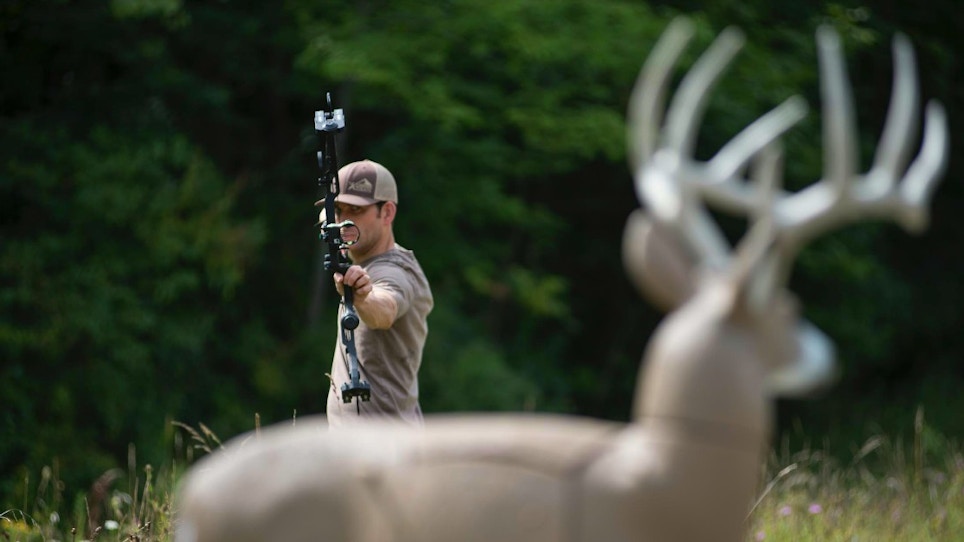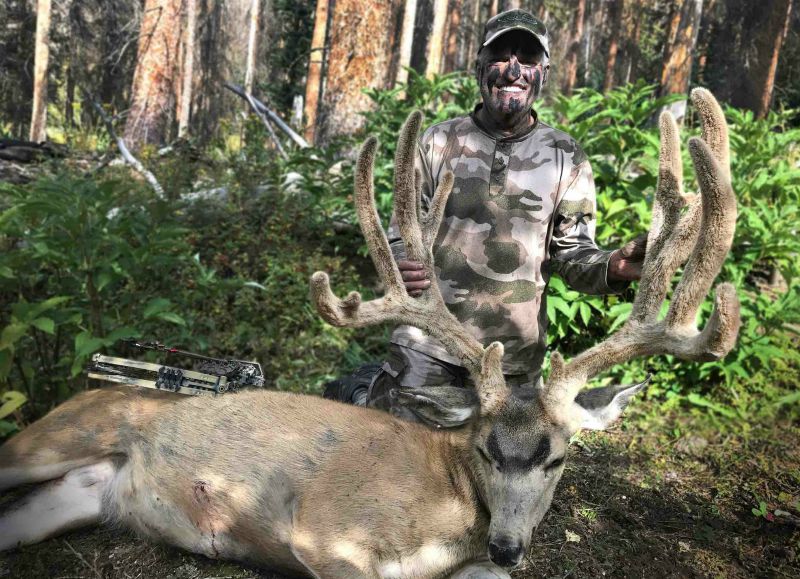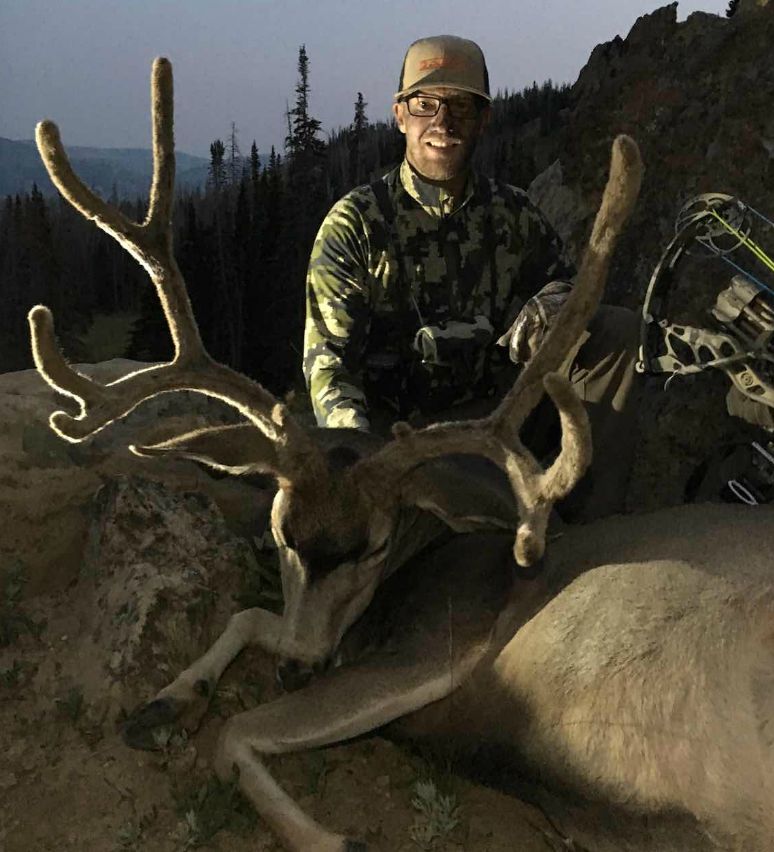Orchestrating a bowhunting shot opportunity is tough business. All the more when chasing species that involve excruciating legwork — elk, moose, sheep and mule deer, for example — through varied terrain and weather conditions. Add a public-land angle to the mix, and odds become steeper still. To boot, when you finally steal within bow range of an animal you want to harvest, you must make the shot. The outcome hinges largely upon how much and what type of practicing you’ve done to prepare for this crucial moment.
Most bowhunters shoot 3-D targets, and many even incorporate them into their backyard routine. But 3-D practice, in its simplest form, does little to improve your bowhunting accuracy during a heated adrenaline rush of epic proportions. There’s more to it.
To excel in bowhunting, follow along as three professional archers/bowhunters share imperative yet practical wisdom that can bolster your pre-hunt 3-D routine.
Repetition . . . But Don’t Overdo It!
A common misconception with pre-hunt practice is that the more you practice, the better you’ll shoot. World-renowned archer and bowhunter Randy Ulmer disagrees. “I became a successful tournament archer because I practiced probably one-fourth as often as my colleagues,” he shared. “Though I don’t currently shoot competitively at the level I once did, to this day, my practice sessions revolve around shooting perfect shots.
“Most serious bowhunters shoot too much, and more importantly, they don’t analyze shooting mechanics to identify and solve problems. They’re strictly about repetition. Rather than shoot 50 arrows a day, shoot 30 arrows every other day, and really emphasize proper shooting form and shot execution. Shoot perfect shots, and that mentality will follow you to the field.”
Champion archer Levi Morgan shared his thoughts: “I don’t think you can shoot too often, but I do believe you can shoot too much during one session. Shooting until exhaustion can incite bad form and habits due to fatigue. If you practice with bad habits, they become permanent.”
Gold Tip’s Kevin Wilke, another successful tournament archer, believes repetition creates improvement, so long as your mind is in the game. “If you’re having fun, I don’t think you can shoot too often,” he said. “Forcing yourself to practice when you don’t want to is torturous. I only shoot when I feel like it, which is quite often.”
According to Ulmer, weight-training archery muscles rather than shooting until exhaustion is a key to his success. “The muscles you use to shoot archery aren’t regularly used for anything else,” he said. “Once I’ve shot my 30 perfect arrows, I focus on conditioning those muscles for strength, memory and endurance at the gym. I understand that not every bowhunter wants or has time to go to the gym. In that case, train at home. I draw my bow and let down until exhaustion without shooting arrows. On my last draw, I hold as long as I can stand it, then let down and call it a day, giving those muscles time to heal and repair.”
3-D Archery Benefits
Ulmer emphasized that picking a spot is central to effective 3-D shooting and bowhunting alike. “Aiming dots on a bag target are spelled out, but 3-D targets require you to identify and pick spots,” he said. “The aim-small-miss-small concept is so true. Pick the precise spot you want to hit, and try to hit that exact spot.
“When shooting 3-D, know that scoring rings often mean little in terms of vital shot placement. For example, if the target is quartering away, a 12-ring shot might be marginal if it were a live animal. When practicing for a bowhunt, shoot the target as if it is a live animal, being mindful of where your arrow would exit.”
Morgan said, “3-D archery gives you the ability to practice from different distances and in different scenarios. There’s nothing like being comfortable with aiming at an animal’s vitals. 3-D archery really instills that skill.”
Wilke expounded on those thoughts: “Shooting 3-D helps you deal with the challenges of an unmarked target. It mimics situations where you must choose and aim at a specific spot. When I shoot 3-D, I closely examine the vitals, absorbing all the details through my optics. I look for details on the target — a shadow or crease — that I’ll be able to see at full draw. I use the same skill to determine shot placement on game.
“3-D shooting also helps you deal with wind, terrain and obstacles — the same challenges we face while hunting. Where I live in Utah, you almost never encounter a shot on flat ground or without wind, so you must train for it.”
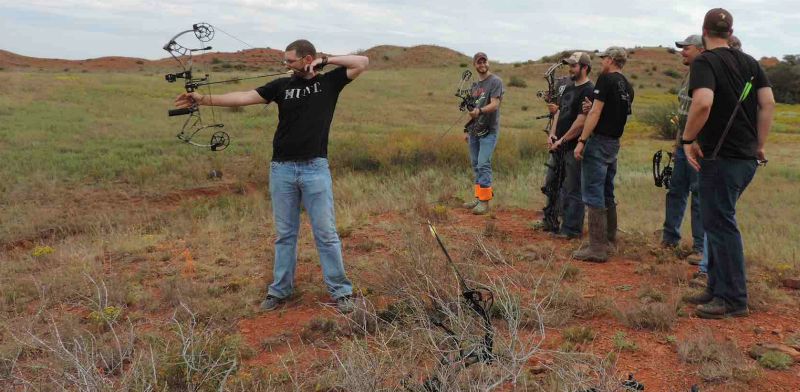 Forget Your Comfort Zone
Forget Your Comfort Zone
Wilke says that shooting for money or when friends are watching gets you out of your comfort zone, which also happens when shooting at an animal.
“Replicating that feeling is the best practice for making the shot on a trophy animal,” he shared. “Learning to shoot when you’re uncomfortable, nervous, anxious or rushed fosters confidence when those same feelings arise while hunting. Shooting competitively doesn’t erase those feelings; it teaches you to shoot accurately while you’re feeling them. I’ve conquered it all before at tournaments, so when buck fever strikes, I know I can handle myself and make the shot.”
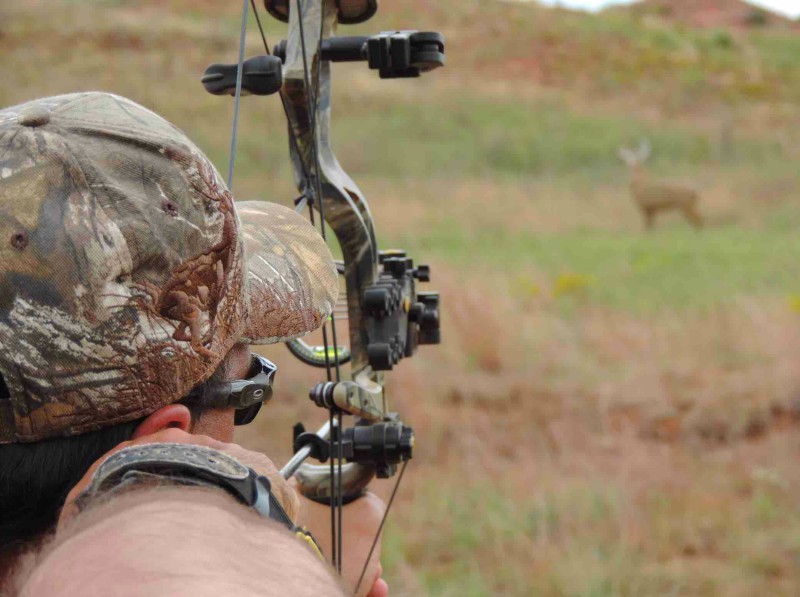 Morgan and Ulmer agreed that shooting the arrow of a lifetime, whether on the line or in the field, involves the same feelings, and therefore makes competitive 3-D archery great bowhunting practice.
Morgan and Ulmer agreed that shooting the arrow of a lifetime, whether on the line or in the field, involves the same feelings, and therefore makes competitive 3-D archery great bowhunting practice.
“You must focus on the process, not the outcome,” Morgan noted. “Don’t think about what’s at stake or the consequences of missing. Instead, focus on the process, step by step, that it will take to succeed.”
“Having experienced both, the rush of shooting competitively is so similar to shooting at a trophy animal,” Ulmer said. “The only real differences are that, with an animal, you must determine if you have an ethical shot, and you must study the animal’s demeanor to determine when to shoot. Most bowhunters have a meltdown when they’re about to shoot at an animal. I hate to admit it, but it happens to me, too. Some folks suggest ignoring these emotions, but I find you can’t lie to yourself. What helps me most is that I admit, yes, I’m scared to death, and, yes, my bow will shake. So I resolve to make the very best shot possible under the circumstances at hand. I find that if I have perfect form, even if my pin is moving, my arrow will usually hit in the center of that movement. Unfortunately, this isn’t something you can easily replicate. Shooting competitive 3-D archery, even if it’s betting your buddy a buck a shot, is the only way to simulate those effects.”
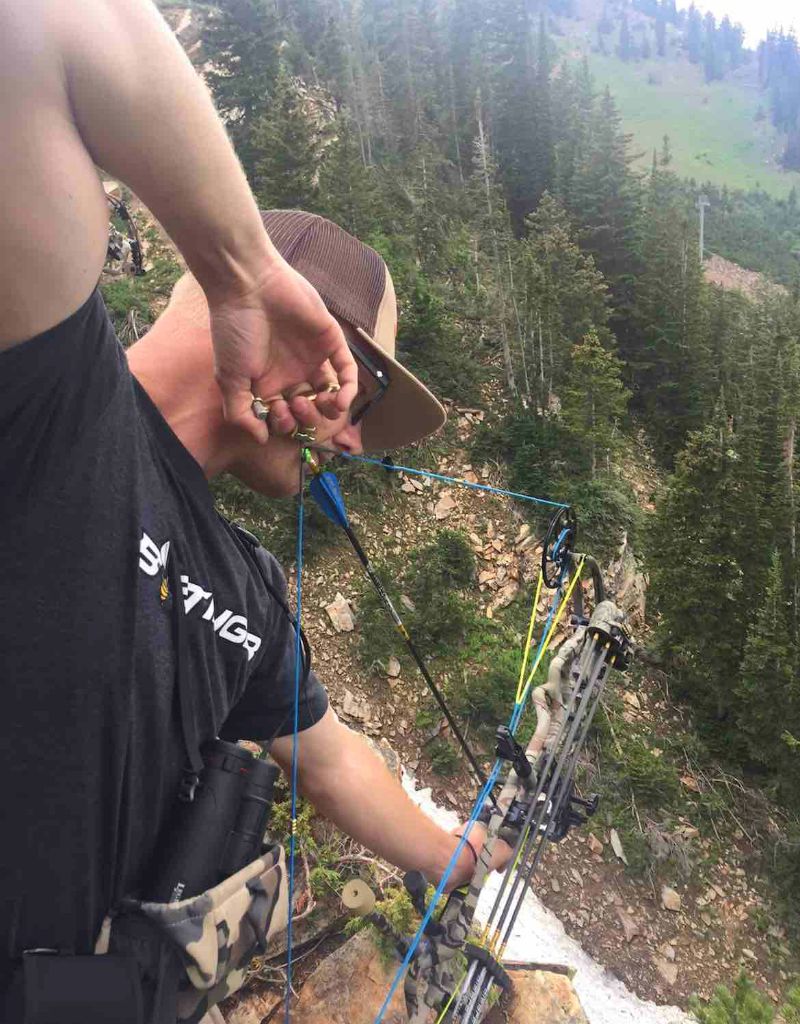
Shots on game animals, especially out West, are often had at steep extreme angles. Practicing at these angles before season open develops confidence and lets you know what you can expect from your equipment.
Make It Real
Shooting a broadside 3-D target in your backyard from 20 or 30 yards is insufficient bowhunting practice. With a 3-D target, it’s wise to add challenges like those you’ll face while bowhunting. Of course, when perfect arrows are fired, backyard practice sessions do help.
Morgan piles on the challenges when preparing for bowhunting season. “I shoot from a stand, while sitting, from weird positions and with my gear on,” he noted. “I also shoot in the wind and rain. This creates an intimate bond between my equipment and me, and I learn how my equipment performs in all these conditions.”
Ulmer says that very few of his bowhunting shot opportunities unfold on flat ground and without Mother Nature’s elements. “Once my bow is sighted-in and I’m happy with my shooting form, I force myself to practice every scenario imaginable,” he said. “I shoot while sitting, kneeling, leaning out from behind a tree — you name it. I also extensively practice both incline and decline shooting. Mule deer are kind of my favorite animal, and my opportunities to shoot them occur in variable terrain where eye-level shots don’t happen. I’m regularly successful at hunting them because I train for the shots I’ll face in the mountains.”
Wilke, a Western bowhunter through and through, shares a similar stance. “Make your practice harder than the real thing,” he said. “I try not to get comfortable when I’m practicing. During the indoor season, I intentionally bounce around from range to range and never shoot from the same lane I did the previous time I was there. And when I’m on the line with other shooters, I’ll occasionally delay so that I’m the last guy standing when the clock is about to run out. That improves my under-pressure performance.
“In the backyard, orchestrate tough shots where you might break an arrow if you miss. Or, if you’re a better shot than your friends, try to level the field. Anything you can do to add a ‘pucker-factor’ prepares you to ace meaningful shots where a miss involves consequences.”
Make the Shot
Wilke believes his demanding 3-D schedule was a key factor in killing his 2017 public-land mule deer. “With only an hour of daylight left during my fourth time out, I spotted a good buck, but not the one I wanted,” he said. “Still, I moved into position, dumped my pack, painted my face and shed my boots. While stalking in, my target buck stepped into an opening at the same moment I did. I had no clue he was in the same draw as me. Undetected, I ranged him and quickly checked the wind. Then I adjusted my sight to 70 yards, drew back, settled my pin and touched my trigger. The buck went down in seconds. It all happened so fast that I didn’t have time to think, only react to what I’d trained for. It was virtually subconscious.”
For Morgan, 3-D archery is critical to every successful bowhunt. “Longer shots always make me thankful for the preparation that 3-D shooting provides,” he said. “Last fall, I shot a moose at 88 yards while under some intense pressure. Without the confidence I’d gained from 3-D practice, I couldn’t have made that shot.”
Ulmer drew from his logjam of bowhunting memories to reference a Dall’s sheep he killed in Alaska some 20 years ago. “The sheep was bedded across a chasm,” he began. “This was before rangefinders, so I not only had to guess the yardage, but since the sheep was at a steep decline, I had to account for the angle, as well as a crosswind. Fortunately, he didn’t know I was there, so I spent a good 10 minutes analyzing the variables.
These are all things I’d learned by shooting 3-D archery. If I was just a bowhunter and didn’t know how to make these calculations, I’d never have made that shot. But, as it turned out, I aimed a foot and a half off the vitals in order to make a lethal shot.”
Apply these lessons from the pros now. There’s still plenty of time before fall. Join a league, sign up for a tournament or simply make a friendly bet with a few friends. Enjoy the process, and get ready to reap the rewards of sweet success.
